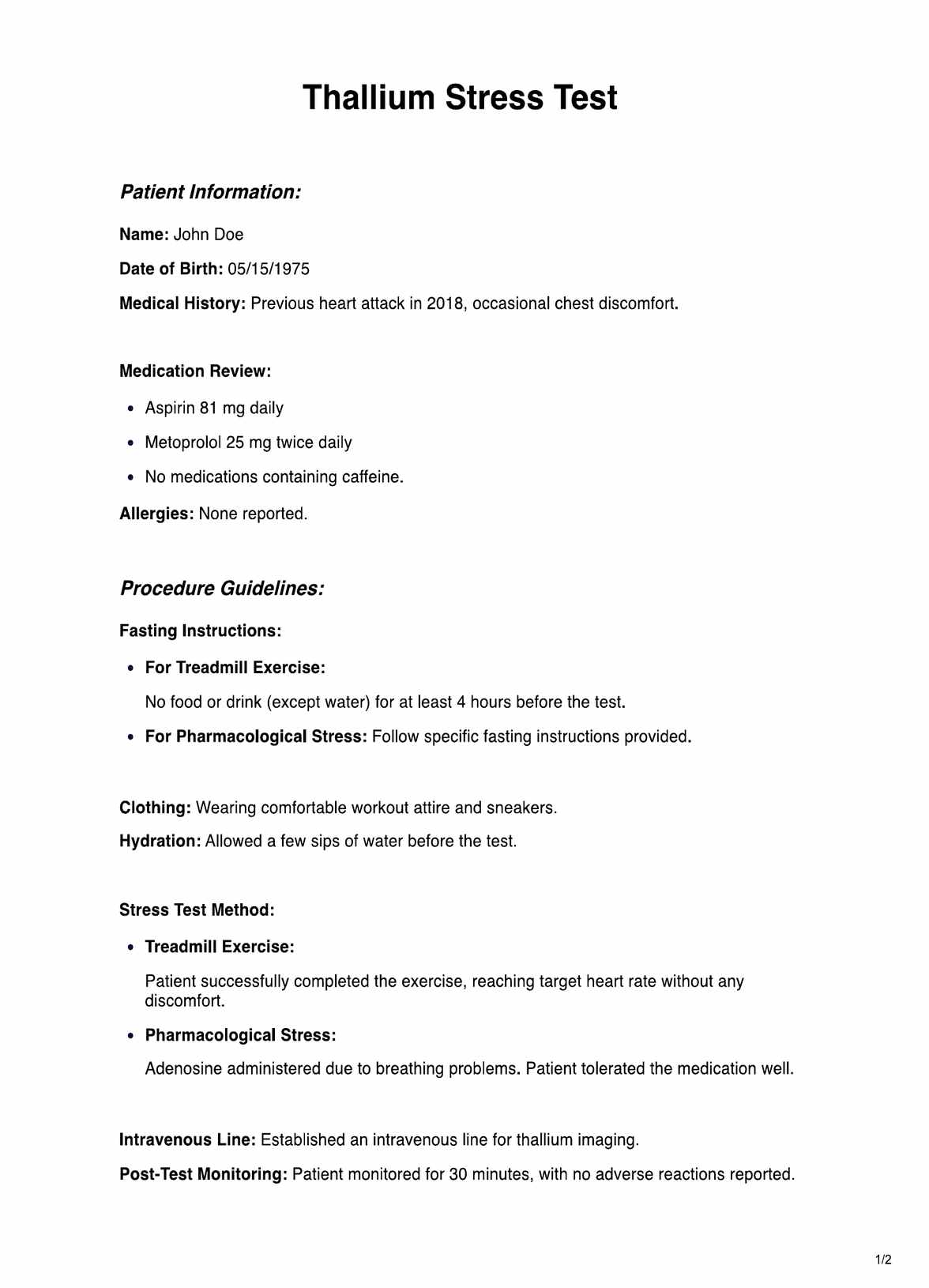A Thallium Stress Test is a diagnostic procedure used to assess blood flow to the heart. It involves injecting a small amount of radioactive substance (thallium) into the bloodstream, followed by imaging to evaluate heart function during rest and stress.

Thallium Stress Test
Measure and assess cardiovascular health effectively with our free Thallium Stress. Enhance health, and prioritize patient care.
Thallium Stress Test Template
Commonly asked questions
This test detects coronary artery disease, assesses the impact of previous heart attacks, and evaluates blood flow within the coronary arteries. It helps healthcare providers identify areas of reduced blood flow or blockages.
Patients typically undergo physical exertion on a treadmill to simulate stress conditions. Alternatively, pharmacological stress agents may be used. A gamma camera captures images of the heart during rest and stress, providing valuable insights into myocardial perfusion.
EHR and practice management software
Get started for free
*No credit card required
Free
$0/usd
Unlimited clients
Telehealth
1GB of storage
Client portal text
Automated billing and online payments











